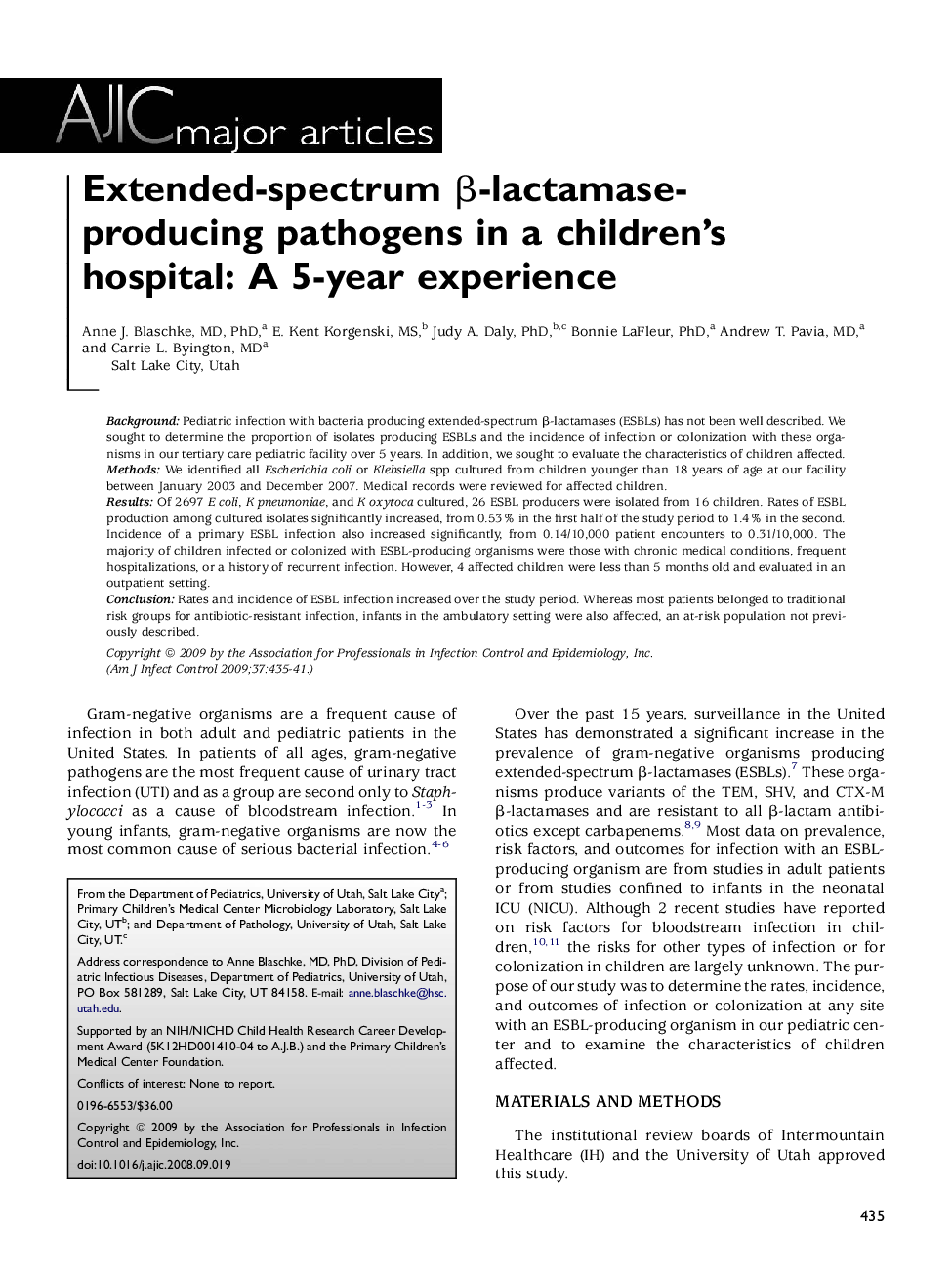| Article ID | Journal | Published Year | Pages | File Type |
|---|---|---|---|---|
| 2638858 | American Journal of Infection Control | 2009 | 7 Pages |
BackgroundPediatric infection with bacteria producing extended-spectrum β-lactamases (ESBLs) has not been well described. We sought to determine the proportion of isolates producing ESBLs and the incidence of infection or colonization with these organisms in our tertiary care pediatric facility over 5 years. In addition, we sought to evaluate the characteristics of children affected.MethodsWe identified all Escherichia coli or Klebsiella spp cultured from children younger than 18 years of age at our facility between January 2003 and December 2007. Medical records were reviewed for affected children.ResultsOf 2697 E coli, K pneumoniae, and K oxytoca cultured, 26 ESBL producers were isolated from 16 children. Rates of ESBL production among cultured isolates significantly increased, from 0.53% in the first half of the study period to 1.4% in the second. Incidence of a primary ESBL infection also increased significantly, from 0.14/10,000 patient encounters to 0.31/10,000. The majority of children infected or colonized with ESBL-producing organisms were those with chronic medical conditions, frequent hospitalizations, or a history of recurrent infection. However, 4 affected children were less than 5 months old and evaluated in an outpatient setting.ConclusionRates and incidence of ESBL infection increased over the study period. Whereas most patients belonged to traditional risk groups for antibiotic-resistant infection, infants in the ambulatory setting were also affected, an at-risk population not previously described.
